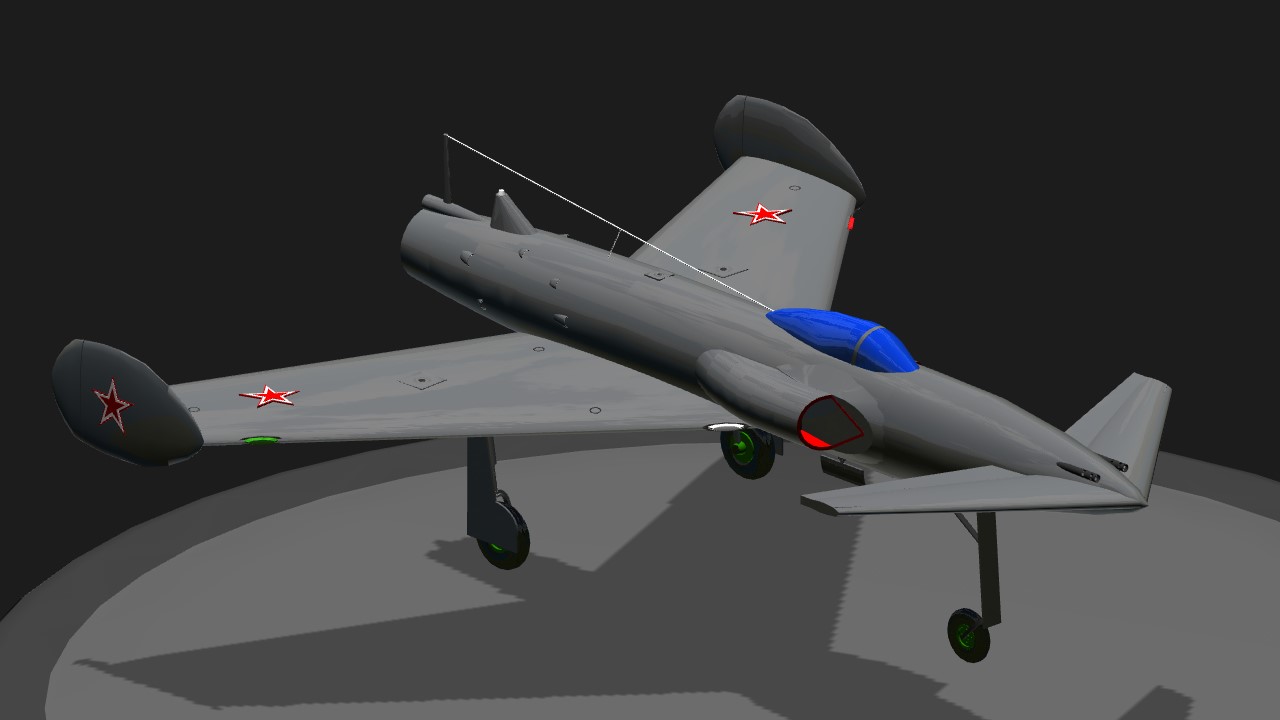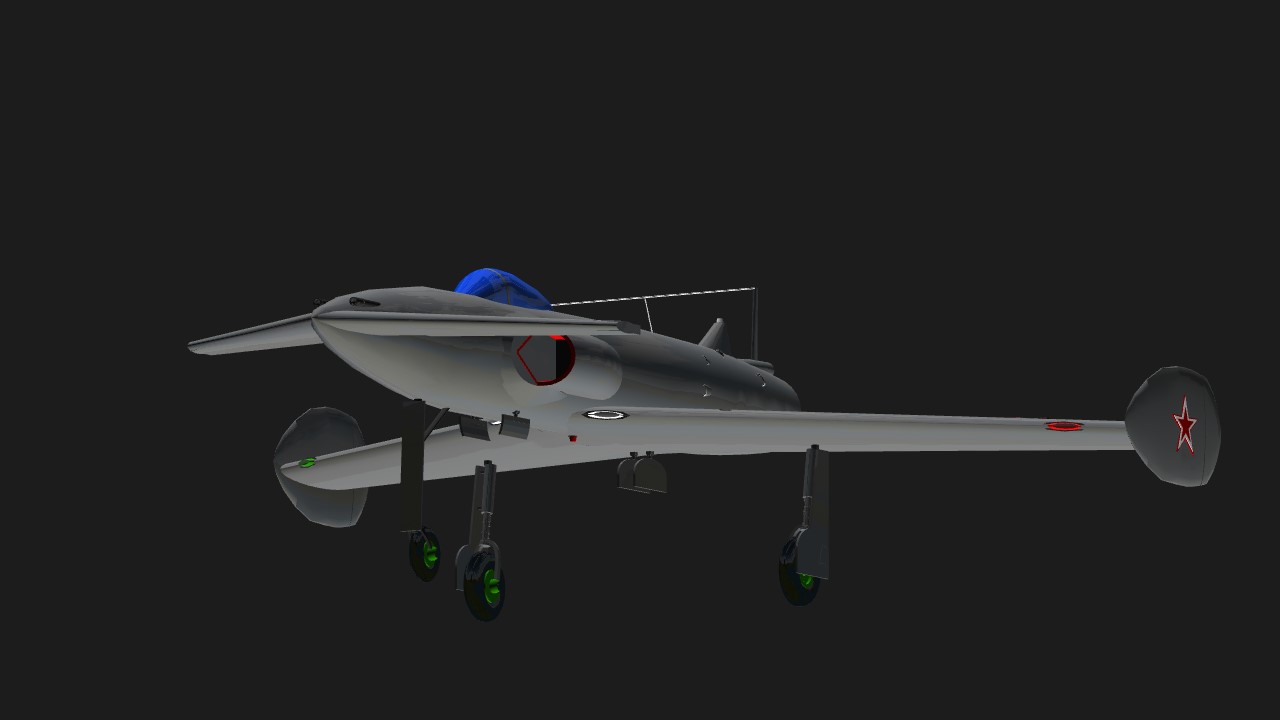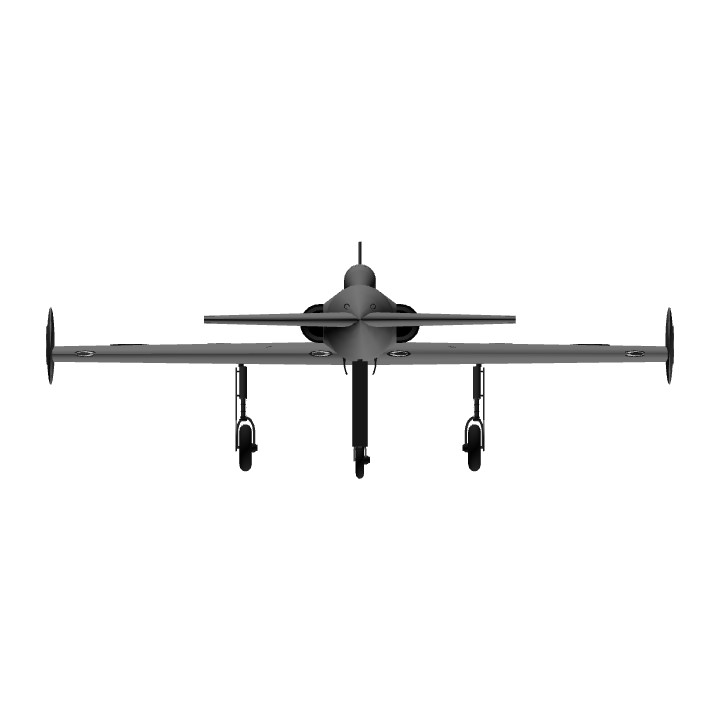This was one of the true beginnings of Soviet/Russian jet fighters.

A little something I have been working on for the past couple of weeks amid a crazy amount of homework. This is the canard proposal for a fighter with the Junkers Jumo-004 turbojet engine. I would have posted it a lot sooner, but trying to solve its flight performance took a lot longer than expected.

Features
- Canard wing layout
- Realistic flight performance
- Two 23mm NS-23 cannon
- Custom landing gear
Controls
- AG-1 - Landing gear doors
- AG-7 - Navigation lights
Pilot’s Notes VERY IMPORTANT
- As this aircraft has one of the earliest jet engines, so expect it to be slow and pretty sluggish at low altitudes. I tried my very best to create realistic acceleration and air speeds.
Trim should be fully down when flying as it prevents it from diving out of the sky.- Takeoff is relatively simple. Throttle up to 100% and reach 120 mph (193km/h). Once there, pull back on the stick until takeoff has been achieved at around 165 mph (265 km/h).
- It is crucial to known that
this aircraft does not have the best vertical stabilization.After pitching up or down, counteract the airplane’s movement with a little of the opposite pitch. - Landing is a kind of tricky if you are not experienced. As early jets were not very fast, air brakes were not a viable option as the jet engines could not output enough thrust to prevent an accident in case the pilot slowed down too quickly. You must throttle off far away from the runway that you can gently glide down and land, but not too close that you will miss the runway, and not too far that you stall and crash. Landing speed is between 135-160 mph (217-257 km/h). Stall speed is 115 mph (185 km/h).
History
Very little is know about this aircraft, except for that it was “one of three preliminary designs to the Yak-Jumo”[1] (Yak-15 “Feather”). The other two designs are described as follows. The first design was base off of the Yak-3 and had a ‘pod-and-boom” structural layout, with the Jumo-004 exhausting underneath the fuselage.
The first proposal looked strikingly similar to the Yak-15. In fact, this was the design that it was developed from. The caption reads, “Variant Yak-Jumo with a high vertical tail”.

The horizontal stabilizer was carried at the top of a gently-curved, but rather short, vertical fin. Two 23mm NS-23 cannon were carried in the upper nose.
The second design was rather odd. It had a canard wing configuration with the vertical stabilizers located in the form of end-plates on the main wing’s edges. A tricycle landing gear was provided, with the armament of two 23mm NS-23 cannon being located in the upper nose firing over the canard stabilizer. The Jumo-004 breathed with the aid of two side intakes flanking the cockpit on either sides.
The second Yak-Jumo design. This one was outright cancelled for various reasons; one of them being that an entirely new aircraft would be challenging to build and produce. The caption reads, “Fighter variant according to the “duck” scheme with the Jumo-004 engine”.

The last design was very interesting, with the cockpit being placed far into the nose of a short fuselage. The tail was carried on twin tail booms projecting slightly up from the main wing with the horizontal stabilizer placed on the top. The Jumo-004 was located in the fuselage rear with side intakes on the fuselage sides below the cockpit. Two 23mm NS-23 cannon were placed forward and below the intakes, which could probably cause some issues with gun gas ingestion at high altitudes.
Final preliminary design of the Yak-Jumo. Caption reads, “Variant of a two-frame fighter with a Jumo-004 engine”.

- Sources: [1] Secret Projects Forum.
Specifications
Spotlights
- Trainzo 5.9 years ago
- MadeUpHimself 5.9 years ago
- Shimamurahougetsu 5.9 years ago
General Characteristics
- Created On iOS
- Wingspan 33.0ft (10.1m)
- Length 37.9ft (11.6m)
- Height 12.4ft (3.8m)
- Empty Weight 7,895lbs (3,581kg)
- Loaded Weight 18,932lbs (8,587kg)
Performance
- Power/Weight Ratio 0.178
- Wing Loading 50.3lbs/ft2 (245.4kg/m2)
- Wing Area 376.7ft2 (35.0m2)
- Drag Points 3330
Parts
- Number of Parts 210
- Control Surfaces 8
- Performance Cost 795






And pic
But how u post with large letters
Hey this plane is of a game I played a day but that was a propeller one
Lol many didn’t. Even some serious hardcore Soviet historians.
@DaDerpachu123
Damn! i didnt even know this existed
@AircraftoftheRedStar
Np!
Thanks for upvotes + spotlights!
@JolyLoly
@Evenstsrike333
Thank you!
@Heavy
@Lorileni
Thanks for the upvote + spotlight.
@SodiumChloride
Thanks!
@Aarons123
Np! @AircraftoftheRedStar
Thank you!
@ToastyTaco
@Trainzo
@Strikefighter04
Very nice jet . I love it .
Thanks.
@nameisalreadytaken